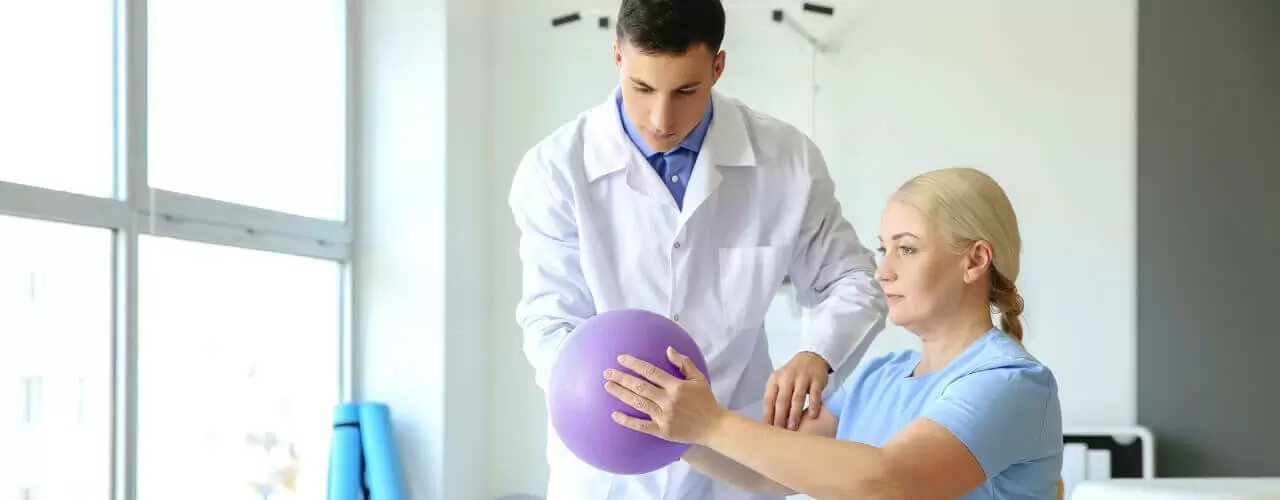Lymphedema
Managing Lymphedema Symptoms with Physical Therapy
Finding Relief with Lymphedema
Lymphedema is categorized as a swelling disease that usually occurs in the upper or lower extremities due to excessive build-up of lymph fluid.
In some cases, people with these symptoms know that they have lymphedema, while in others, the condition may need to be diagnosed.
The lymphatic system is an important part of your immune and circulatory systems. It’s a network of vessels that carry lymph fluid to the core. Lymphedema may occur when that system is not working properly.
If your lymphatic system is blocked, you may feel swelling of your arms or legs, as the fluid cannot drain properly. Improper drainage results in the build-up of lymph fluid in your arms and legs, which may pose potential health hazards if left untreated.
If you are dealing with this condition, there is, fortunately, a safe way for you to manage your symptoms: physical therapy. Contact Total Body Physical Therapy today and schedule an appointment – let us help you find the relief you deserve!
How can physical therapy help with my lymphedema symptoms?
While there is no cure for this disease, physical therapy is a healthy and natural way to treat the symptoms of lymphedema.
Physical therapists are trained movement experts who can use a variety of strategies to help ease your discomfort and show you how to reduce your symptoms at home.
At Total Body Physical Therapy, our Sarasota physical therapists will complete a comprehensive review of your condition and develop a personalized treatment plan to treat your specific case of lymphedema.
This plan will focus on your physical exam, your health history, and the severity of your symptoms. For lymphatic care plans, the focus will be on manual therapy and pain relief exercises.
Physical therapists may use manual therapy as a method to help manage your pain and symptoms. One particular form of manual therapy, called manual lymphatic drainage, is widely used for lymphedema patients.
Manual lymphatic drainage facilitates the flow of lymph fluid to the upper and lower extremities. This can also be followed by additional massages to improve circulation and promote relaxation.
Your exercise routine, developed by one of our physical therapists, will include gentle muscle contractions to restore your function and increase your range of motion. Exercise of the affected limb(s) often promotes the drainage of lymph fluids.
There are many complications that need to be considered when it comes to conditions that include persistent swelling. These include circulation disorders, infections, and the risk of possible injury.
It is very important to seek treatment if you have lymphedema and to follow up regularly with your doctor and physical therapist, in order to ensure that your condition does not worsen.
Additional treatments, such as wrapping, compression, or complete decongestive therapy may also be added to your treatment plan as our physical therapist deems fit.
Does this sound like you?
There are two categories of lymphedema: primary lymphedema and secondary lymphedema.
Both of these conditions are difficult to deal with, but they occur for different reasons.
Primary Lymphedema
Primary lymphedema is either hereditary or develops on its own. The cause of primary lymphedema is not always apparent. Your primary care physician may want to take additional imaging tests to look at your lymphatic system and to rule out any potential conditions. These tests can include MRI scanning, CT scanning, Doppler ultrasound, or lymphoscintigraphy.
Secondary Lymphedema
Secondary lymphedema occurs as a result of a disease or disorder. It can also happen after a person is treated for cancer; oftentimes during surgical treatments, lymph nodes are weakened or removed entirely. Lymphedema can also be the product of a surgical procedure involving lymph nodes.
The most common causes of secondary lymphedema include:
- Infection
- Radiation treatment for Cancer
Symptoms of lymphedema typically occur in the arms and legs. Pain levels vary from moderate (noting slight changes or sensations in your limbs) to serious (noticing extreme changes or feelings in your limbs, to the point where they may be difficult to use).
Lymphedema can often take months or even years to develop as a result of cancer treatment.
The following symptoms of lymphedema are pretty common, and if you’re experiencing them, it’s important to contact a therapist as soon as possible:
- Swelling
- Infections
- Fibrosis
- Aching/discomfort
- Heaviness/tightness
- Restricted range of motion
Discover the relief you’ve been looking for today
Lymphedema may be affecting your life right now, but it doesn’t have to be that way forever.
If you’re struggling with lymphedema and looking for help, your journey toward pain relief starts right here. Call us at 941-203-8705 or click here to make an appointment at our clinic today. Total Body Physical Therapy can help reduce the effects of your lymphedema and improve your everyday life!



